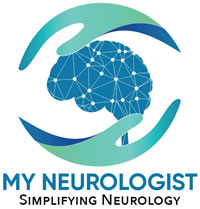Defect of vision is a common problem, and in some ways affects all of us. In most cases, there is an easy and predictable explanation, like blurriness of vision of middle and old age. This is considered a “normal” part of aging, and not a disease process. In many other situations, a person may lose partial or the whole vision from one or the both eyes from a disease process. In general, blindness is of two types:
- Peripheral Blindness: The term peripheral here implies away from the brain. This type of blindness is from a defect in one or both eyes or the optic nerves. In this type of blindness, the patient is unable to see an image, partially or completely. Our vision requires perception of light signal, and all of us are blind in darkness. An eye acts as a receiver of visible-light signals of different wavelength and intensity. These signals are carried to the brain through optic nerves. With a defective receiver, the light signal generated by an image may not be detected, and thus blindness.
There are numerous causes of an eye to malfunction causing blindness; some are mechanical like an opaque lens (cataract), or high eye pressure (glaucoma), while many others are due to a neurological defect (problem with neurological structures in and around the eye). Traditionally, neurologists do not deal with mechanical or non-neurological issues. Please consult an optometrist or an ophthalmologist for any such problem. Neurological issues affecting eyes or the optic nerves, on the other hand, fall under neuro-ophthalmology, and are discussed on this site.
b. Central or Cortical Blindness: This is the blindness from a defect in the brain. In this type of blindness, patient is unable to perceive an image, partially or completely. Eyes and the optic nerves may get the light signal, and the patient may see the image, but not perceive it, or perceive it well. This is due to the defect of visual pathways of brain, including the cerebral cortex. The term visual pathway implies all those areas of the brain that carry visual signals from the optic nerves to the back of the brain to be analyzed and perceived. Cortical blindness is a term for the blindness caused by dysfunction of any part of the visual pathways or the areas of the brain that analyze and perceive images. It is not a single condition, and can cause multiple types of problems depending upon the location of the damage in the brain. Examples of cortical blindness are hemianopsia, Anton Syndrome, Visual agnosia, etc. Some of these conditions are explained in individual folders.
What should I do if my vision is blurred?
It depends; if it happens suddenly, call 911 or go to emergency room to make sure it is not caused by a stroke. Many eye and brain conditions causing sudden onset of blindness need urgent evaluation and treatment. In chronic conditions, start with an eye examination or visit to an optometrist.
How is the cause of blindness diagnosed?
Because of the long list of conditions that can cause different types of blindness, there is no easy answer to this question. Proper diagnosis requires detailed history, examination, and may be some investigation. Many common conditions do not require any urgent testing. For example, a common cause of loss of vision is migraine, in which blurriness of vision builds up in a few minutes, lasts for a few minutes to an hour or two, and usually is not complete. Historical facts are extremely important to figure out the right diagnosis.
Where can I get more information about blindness or blurred vision?
American Ophthalmology Society


Leave a Reply
Your email is safe with us.
You must be logged in to post a comment.